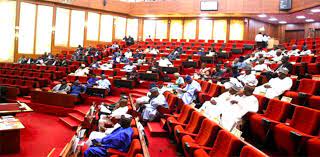Extreme Weather Disrupts Education for 242 Million Children, UNICEF Warns of Climate Crisis Impact

Extreme weather events last year disrupted the education of approximately 242 million children across 85 countries, roughly one in seven students worldwide, according to a new report from the UN Children’s Agency, UNICEF. The agency highlighted the overlooked impact of climate change on children’s access to education, with heat waves emerging as the most significant factor.
UNICEF’s Executive Director, Catherine Russell, warned that children are particularly vulnerable to the effects of extreme weather. “They heat up faster, sweat less efficiently, and cool down more slowly than adults,” she said. “Children cannot concentrate in classrooms with no relief from the heat, and they cannot attend school if roads are flooded or if their schools are destroyed.”
The report notes that global temperatures reached record highs in 2024, with some areas surpassing the critical 1.5°C warming threshold, contributing to more intense and unpredictable weather patterns. As a result, heat waves, floods, and storms have significantly disrupted schooling around the world, especially in regions already facing high levels of environmental vulnerability.
UNICEF’s findings point to at least 171 million children being affected by heat waves last year, with countries such as Bangladesh, Cambodia, India, Thailand, and the Philippines experiencing extreme heat. In the Philippines, for instance, thousands of schools without air conditioning were forced to close, with children at risk of heat-related illnesses like hyperthermia.
September, which marks the beginning of the school year in many countries, saw widespread school closures due to the devastating Typhoon Yagi in East Asia and the Pacific. In total, 18 countries suspended classes due to climate-related disasters, particularly heat waves and floods.
South Asia was the region most affected, with 128 million schoolchildren impacted, including 54 million in India and 35 million in Bangladesh, primarily due to heat waves. The disruptions are expected to worsen as global temperatures rise, with projections showing that by 2050, eight times as many children will be exposed to heat waves as in 2000. Extreme flooding and wildfires will also affect millions more children.
UNICEF expressed concern that these climate-induced disruptions could lead to higher dropout rates, particularly among girls, and exacerbate existing educational challenges. “Two-thirds of children worldwide cannot read with comprehension by age 10,” the report noted, stressing that climate hazards are worsening this already alarming reality.
“Education is one of the services most frequently disrupted by climate hazards,” Russell said. “Yet it is often overlooked in policy discussions. Children’s futures must be at the forefront of all climate-related plans and actions.”
To mitigate the impact, UNICEF has called for greater investment in climate-resilient school infrastructure, urging governments and organizations to prioritize the protection and continuity of education in the face of escalating climate risks.





